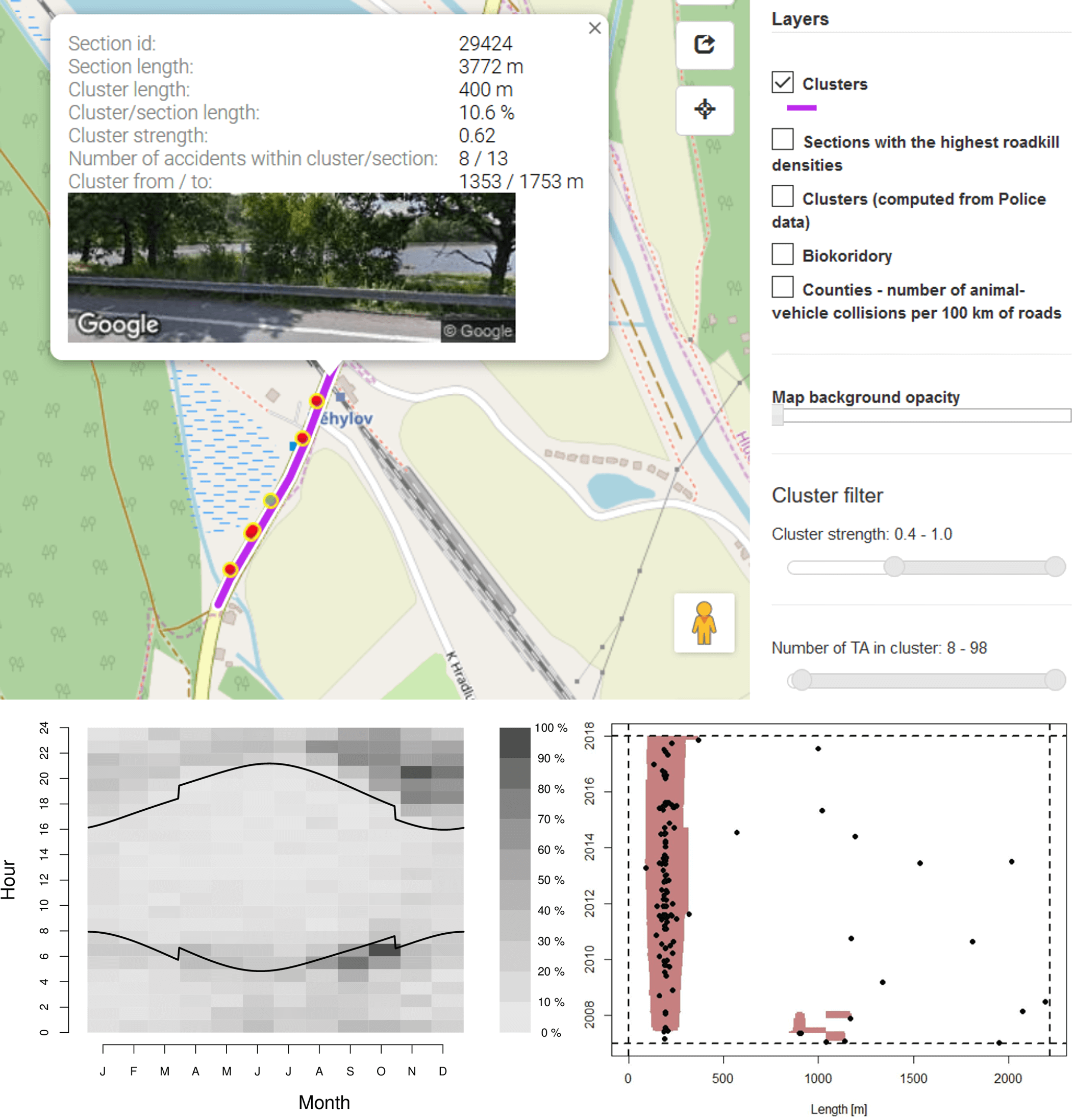Road and railway traffic accidents involving large animals are increasing in many European regions. Removing carcasses is a significant task for maintenance crews, has health and safety implications and high economic costs. To appropriately record and analyse traffic accidents involving animals is the basis for identifying hotspots of wildlife mortality, factors increasing the risk, and the data thresholds at which action to reduce the AVC must be taken.
Investing in appropriate mitigation measures to avoid AVC is cost-effective practice in economic, social and environmental terms. A number of mitigation measures can be applied by road operators, such as improving or reinforcing fences, adapting existing transversal structures to be used by wildlife, and enhancing wildlife awareness signage based upon expert identification of conflict points and assessment of potential solutions.
AVC management should be based on the points listed below.
- Develop practice based on instructions for the whole AVC management process including searching, removing, recording data and undertaking regular expert analyses to determine conflictive road sections and take corrective action.
- Define and apply procedures for removal and destruction of carcasses, or any other treatment according to national legislation. Be aware that some animal health regulations could require specific management of carcasses, e.g. strict biosafety conditions exist for wild boar carcass management in regions affected by African Swine Fever.
- Use a system to record roadkill data which allows mitigation measures to be defined from the information. The data recorded from field crews collecting carcasses provides the key basic information. Periodic additional surveys conducted by wildlife experts are needed in sensitive areas crossing habitats with high risk of mortality of small animals (protected areas, river crossings, wetlands, etc.) which are not recorded during regular crew patrolling.
- Provide field crews with procedures and appropriate devices for accurately recording carcasses collected. Other stakeholders may also provide data such as police, traffic authorities, conservation organisations, hunters, etc.
- Define and apply user friendly procedures for recording data about each animal carcass, which include time (date and hour), location (road code, coordinates of the point) and details about the animal (species, sex and age class: adult or juvenile) if known. Local conditions related to the infrastructure or the landscape which help understand why the accidents occur should also be recorded.
- Develop appropriate training for maintenance staff and field crews on data collection and carcass management (see Section 7.2.1 – Steps to develop the ecological asset maintenance plan; step 5) including guides to identify the species.
- Undertake regular analyses of the data collected to identify road mortality hotspots, to be undertaken by experts (Figure 7.3.1):
- Provide maps identifying single AVC events and AVC hotspots by using software which can define a frequency threshold goal and rank hotspots according to cluster strength, such as KDE+ (Figure 7.3.1A)
- Determine factors influencing wildlife mortality clustering (generally and for target species or groups) by applying appropriate statistical analyses. Comparisons between environmental, road and other factors for both AVC hotspots and individual AVC events must be produced (Figure 7.3.1B). The most hazardous hotspots could require inspection by experts to investigate causes.
- Based on data analysis results, select the most suitable mitigation measures according to road type and species involved. Use expert advice and consider up-to-date scientific literature and technical guidelines to ensure that effective measures are implemented and monitored (Figure 7.3.1C).

- Set the general qualitative or quantitative standards to be met and thresholds of AVC frequency which can vary widely depending on target species and their numbers in the area. This permits identification of priority road sections where thresholds are breached and appropriate mitigation measures must be taken.
- Evaluate, monitor and report successes, needs and conflicts experienced during the management of wildlife road mortality, in order to include this information in future plans.
- Modify the maintenance plan and undertake corrective actions according to results and information gathered and to target species most frequently killed. Define and schedule additional actions to reduce conflicts (fencing combined with fauna passage, modification of verge and median conditions, etc.) if conflict increases or expands.
The following descriptive maintenance task sheets are provided in Section 7.4 – Maintenance tasks sheets: